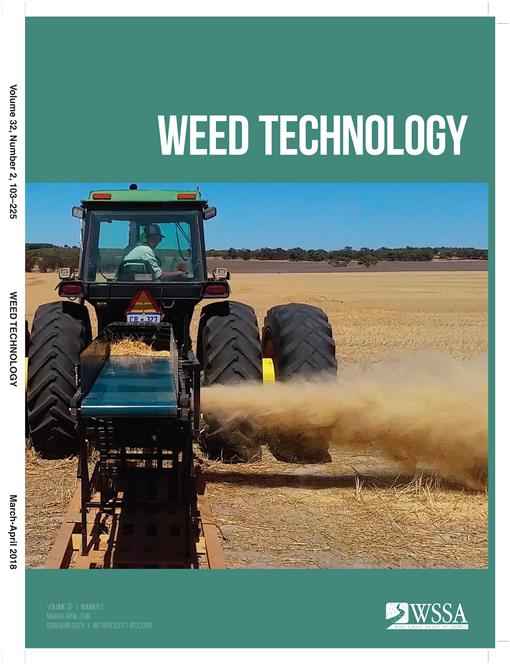Dicamba-resistant soybean technology provides an additional site of action for POST control of herbicide-resistant broadleaf weeds in soybean but also raises concern of off-site movement and damage to sensitive crops in adjacent fields. Dicamba formulations approved for use on dicamba-resistant soybean require applicators to use nozzles producing large droplets to reduce the risk of spray-particle drift. The use of nozzles with relatively larger droplet spectra can reduce herbicide deposition on target weeds, especially if a filtering effect from the crop canopy occurs. Experiments were conducted to evaluate the influence of broadcast nozzle design on the deposition and efficacy of 280 g ha-1 glyphosate plus 140 g ha-1 dicamba applied POST to four herbicide-resistant weed species. The TTI11004 nozzle, the original nozzle labeled for dicamba applications on dicamba-resistant soybean, reduced deposition coverage and density on spray cards compared with the TT11004 and XR11004 nozzle. The AIXR11004 nozzle produces a very coarse droplet spectrum and did not reduce coverage on spray cards, though it did reduce deposition density. Herbicide solution deposition onto Palmer amaranth, tall waterhemp, giant ragweed, and horseweed ranged from 0.41 to 0.52, 0.55 to 0.87, 0.49 to 0.58, and 0.38 to 0.41 µl cm-2, respectively. Nozzle design and droplet spectrum did not influence the deposition of herbicide solution onto the target weed, as all nozzles were equivalent for all species and site-years. Herbicide efficacy was not influenced by nozzle design, as weed control and plant height reduction were similar for all species. The results of this experiment show that the use of the TTI11004 nozzle for dicamba applications to dicamba-resistant soybean will provide acceptable herbicide deposition and efficacy when applied under the label requirements of weed height and carrier volume.
Nomenclature: Dicamba; glyphosate; giant ragweed, Ambrosia trifida L. AMBTR; horseweed, Conyza canadensis (L.) Cronq. ERICA; Palmer amaranth, Amaranthus palmeri S. Wats. AMAPA; tall waterhemp, Amaranthus tuberculatus (Moq.) Sauer ( = A. rudis) AMATU; soybean; Glycine max (L.) Merr.





